
A preview of the 2023 tornado season
During the first three months of this year, the U.S. saw its highest tornado count on record, according to preliminary data from NOAA’s Storm Prediction Center. The storms have led to numerous accounts of damage from direct and indirect wind, as well as from significant hail. The tornado outbreak at the end of March caused an estimated $4.3 billion in damages alone.
The Washington Post reports that there have been around 67,000 tornadoes in the United States since 1950, with most having an average path of under four miles. According to their analysis of NWS data recorded between 1950 and 2021, less than 1% of tornadoes in the U.S. travel more than 50 miles, and only 1 in 1,100 tornadoes cover more than 100 miles. However, the tornadoes that have occurred in 2023 have regularly exceeded the average path length.
67,000 tornadoes in the US since 1950

The impact on utility grids
The tornados that ripped through Arkansas, west Tennessee, and Ohio at the end of March left over 1.1 million U.S. utility customers without power. The storm system caused disturbances not only in the distribution grids, which are the local power line networks commonly seen running overhead to buildings, but also in the larger transmission grid in the Midwest, which is a much rarer occurrence.
Outages Recorded
- Indiana: 99,063
- Minnesota: 84,092
- Ohio: 59,446
- Arkansas: 55,633
- Illinois: 55,731
- Tennessee: 48,323
- Michigan: 17,629
- Wisconsin: 13,177
- Kentucky: 13,282
- Iowa: 12,880
Tornados and straight-line winds can have a significant impact on electrical grids. Outdoor overhead wiring is particularly vulnerable to damage from flying debris and falling trees. Meanwhile, wiring within structures may be affected if the building is twisted, racked, or moved due to strong winds. Even if the damage to electrical systems is severe, it may not be immediately visible or noticeable, posing a risk to safety and functionality.
The financial stability and operational effectiveness of utilities are also at stake. Traditionally, utilities have been known for providing a reliable service at a reasonable cost. However, with climate change posing new threats, their priorities may need to shift. For instance, in light of the increasing tornado frequency and the substantial property damages they have caused, utilities are now taking measures to mitigate risks that may also decrease reliability. This represents a significant shift in strategy for the utility industry, as they grapple with the challenges posed by climate change.
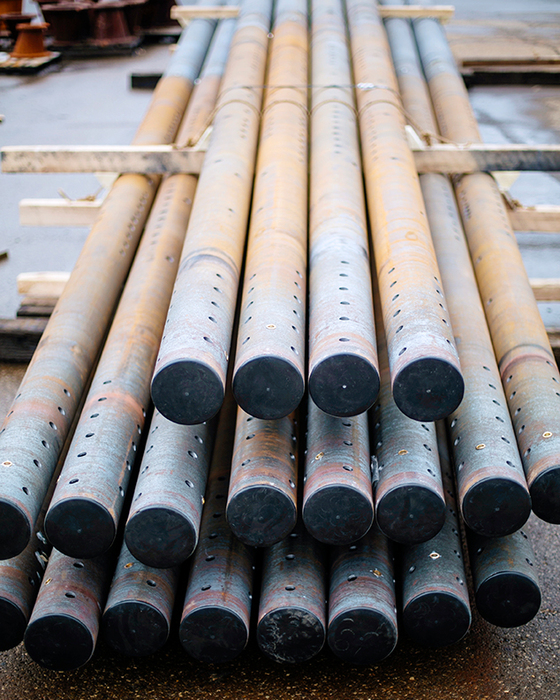
How to prepare for a tornado response
Utility grids are especially vulnerable to tornadoes, making line hardening critical in reducing damage and fatalities.
The EPA suggests several measures power utilities should make when preparing for a tornado:
Planning
- Review and update your utility’s emergency response plan (ERP) and ensure all emergency contacts are current.
- Conduct briefings, training and exercises to ensure utility staff is aware of all preparedness, response and recovery procedures.
- Conduct a hazard vulnerability analysis in which you review historical records to understand the past frequency and intensity of tornado events and how your utility may have been impacted.
- Complete pre-disaster activities to help apply for federal disaster funding (e.g., contact state/local officials with connections to funding, set up a system to document damage and costs, take photographs of the facility for comparison to post-damage photographs).
Communication
- Outlining response activities, roles and responsibilities and mutual aid procedures (e.g., how to request and offer assistance).
- Establishing communication protocols and equipment to reduce misunderstandings during the incident.
Communication with Customers
- Develop outreach materials to provide your customers with information they will need after a tornado.
Facility
- Inventory and order extra equipment and supplies, as needed.
- Ensure communication equipment (e.g., radios, satellite phones) works and is fully charged.
- Develop a GIS map of all system components and prepare a list of coordinates for each facility.
Personnel
- Identify essential personnel and ensure they are trained to perform critical duties in an emergency (and possibly without communication), including the shut down and start up of the system.
- Establish communication procedures with essential and non-essential personnel. Ensure all personnel are familiar with emergency evacuation and shelter in place procedures.
- Pre-identify emergency operations and cleanup crews. Establish alternative transportation strategies if roads are impassable.
- Consider how evacuations or limited staffing due to transportation issues (potentially all utility personnel) will impact your response procedures.
- Identify possible staging areas for mutual aid crews if needed in the response, and the availability of local facilities to house the crews.
- Encourage personnel, especially those that may be on duty for extended periods of time, to develop family emergency plans.
Systems
- Evaluate condition of electrical panels to accept generators; inspect connections and switches.
- Document power requirements of the facility.
- Confirm and document generator connection type, capacity load, and fuel consumption.
- Test regularly, exercise under load, and service backup generators.
- Ensure this equipment and other hazardous materials are located in a safe zone.

How McWane helps recovery efforts
Over the last few months, McWane has helped several utilities replace their poles after storm damage, including the severely hit areas of Arkansas, west Tennessee, and Ohio.
- A tornado struck Covington Electric’s service area on March 31, and McWane was able to quickly delivery 34 new ductile iron poles by April 12.
- In Wapakoneta, Ohio, and EF1 tornado hit on April 1, and we delivered 10 poles by April 12 as well.
- In Big Rivers, Kentucky, we delivered 33 poles on March 23 after a major tornado.
How to get started preparing your utility
Planning for future tornados is critical in preventing widespread damages, and McWane can help your utility determine how to implement ductile iron poles throughout your grid.
We have conducted extensive testing, including full-scale horizontal bend testing, in which we subjected a ductile iron pole to two load cycles. After cycle 1, the load was released and residual tip movements were recorded. Load cycle 2 was continued until pole failure. The load and deflection data from the test was adjusted to account for the 12-degree line angle of the cable, as shown in figure 1. The measured load, adjusted load, and adjusted deflection for each cycle is shown in table 1.
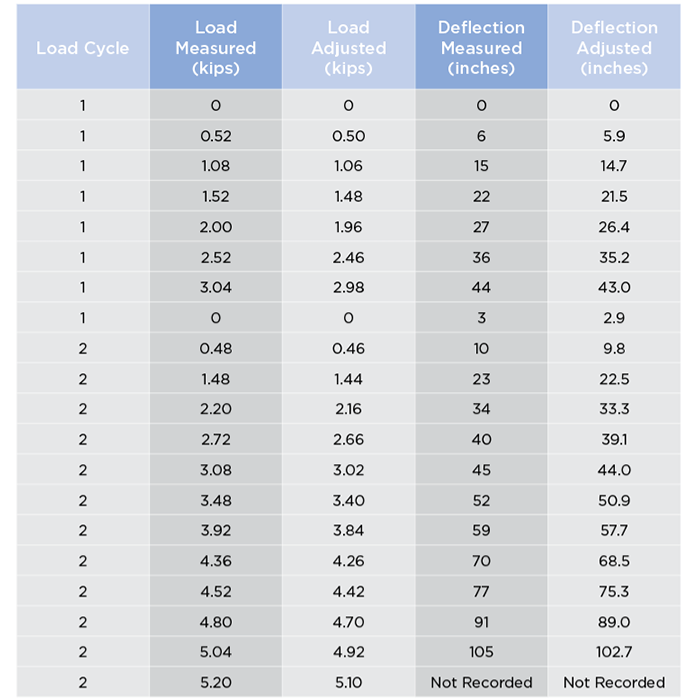
Class 1 Tip Load (2.95 kips)
The Class 1 pole design is based on a 2.95 kip load applied 2’ from the tip. The measured tip deflection for cycle 2 is 42.3” (measured at class load) minus 2.9” at the start of cycle 2 equals 39.4”. This value is greater than the calculated deflection shown in the PLS pole design output of 35”. This small difference could be attributed to pole rotation at the supports when compared to a theoretical fixed groundline.
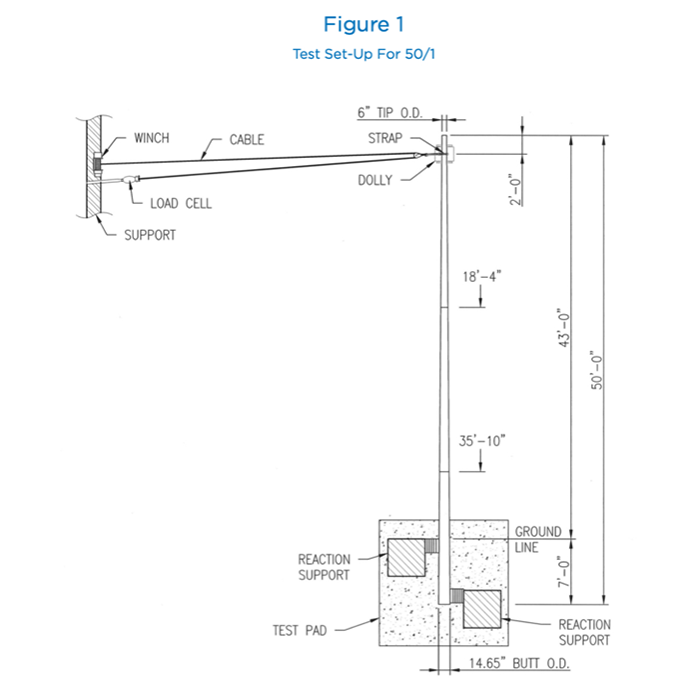
Yield Tip Load (3.06 kips)
The yield tip load was calculated to be 3.06 kips. This value is the point along the pole where the actual bending stress reaches a calculated bending stress of 42 ksi. The measured tip deflection for cycle 2 is 44.1” (measured at yield load) minus 2.9” at the start of cycle 2 equals 41.2”. This value is slightly greater than the calculated deflection shown in the PLS pole design output of 37”.
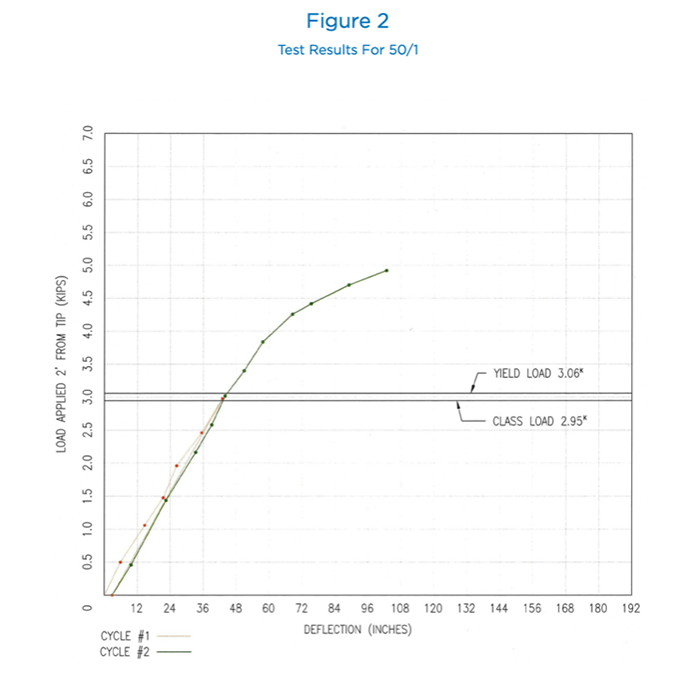
Failure Tip Load (5.04 kips)
The 5.04 kip load applied 2’ from the tip resulted in pole failure at the groundline. The failure was buckling of compression face at the groundline.
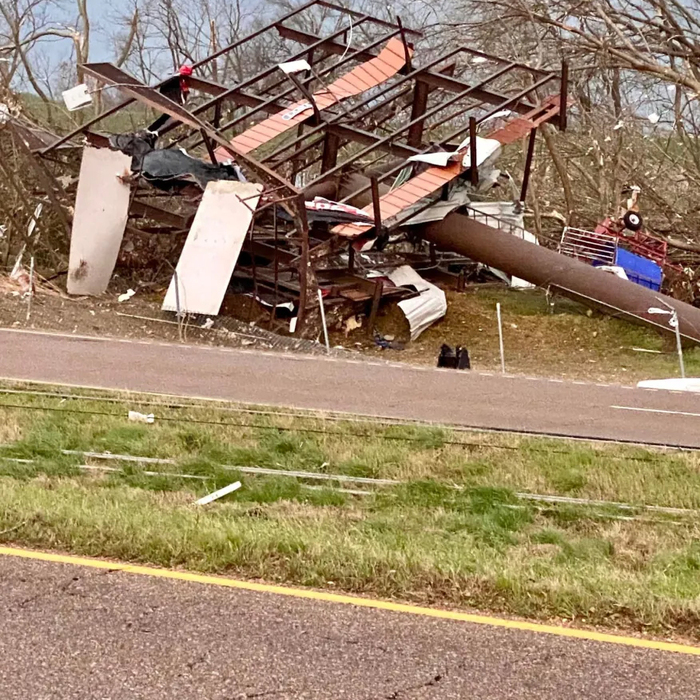
Learn more about preparing your utility
While the weather cannot be controlled, aging power infrastructure can be addressed. Read the latest article that we posted on our website to learn more about building a resilient transmission line to last a lifetime. The paper presents in detail three Central Virginia Electric Power Cooperative (CVEC) transmission line projects (46 kV, 115 kV, and 138 kV) designed to last a lifetime and provide the resiliency needed using ductile iron poles, while overcoming some unique and difficult obstacles of construction.
Contact our team for assistance with your specific needs here.

